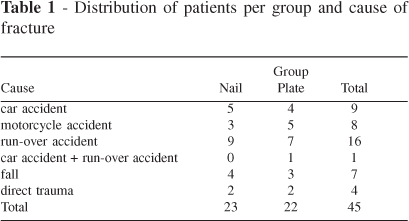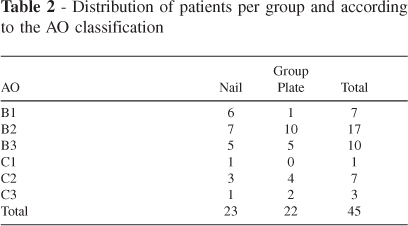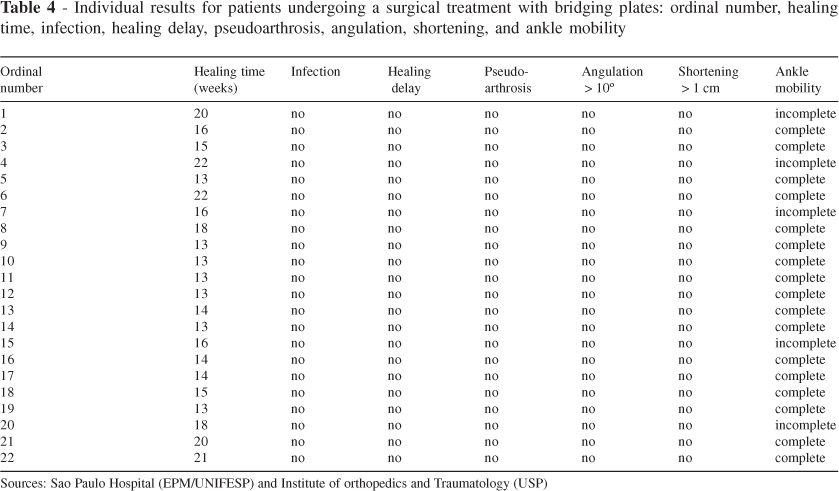OBJECTIVE: A prospective, randomized study to compare patients with closed, multi-fragmented tibial diaphyseal fractures treated using one of two fixation methods undertaken during minimally invasive surgery: nonreamed interlocking intramedullary nails or bridging plates. MATERIALS AND METHODS: Forty-five patients were studied; 22 patients were treated with bridging plates, 23 with interlocking nails without reaming. All fractures were Type B and C (according to the AO classification). RESULTS: Clinical and radiographic healing occurred in all cases. No cases of infection occurred. The healing time for patients who received nails was longer (4.32 weeks on average) than the healing time for those who received plates (P = 0.026). No significant differences were observed between the two methods regarding ankle mobility for patients in the two groups. CONCLUSIONS: The healing time was shorter with the bridging plate technique, although no significant functional differences were found.
Intramedullary fixation of fractures; Tibial fractures; Bridging plates; Diaphysis; Comminuted fractures






